The Print Advert:
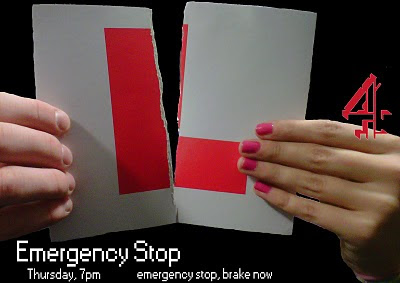
The Radio Advert:
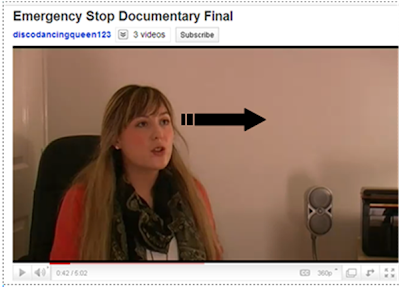
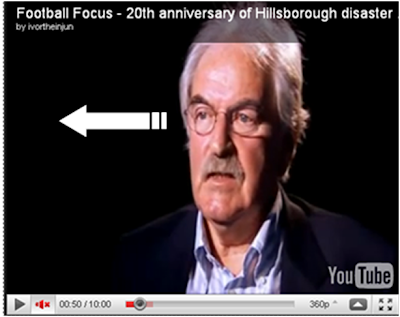
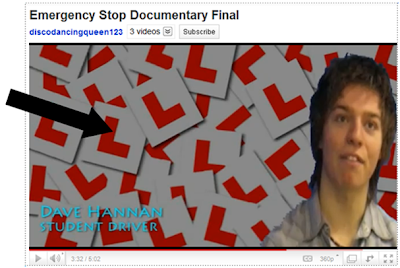
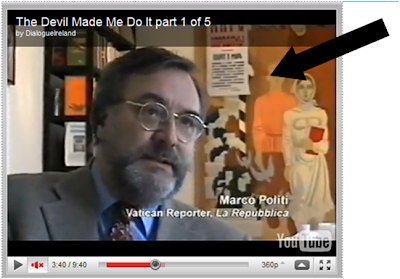 Here you can see that the Mise-en scene is very important in explaining what the interviewee is talking about and it realates so that the audience have more knowledge of the topic. For example Dave a learner driver we interviewed, had L plates ontop of eachother as the background and here I have compared it to an professional documentary interview and the mise en scene relates to what the interviewee is talking about.
Here you can see that the Mise-en scene is very important in explaining what the interviewee is talking about and it realates so that the audience have more knowledge of the topic. For example Dave a learner driver we interviewed, had L plates ontop of eachother as the background and here I have compared it to an professional documentary interview and the mise en scene relates to what the interviewee is talking about.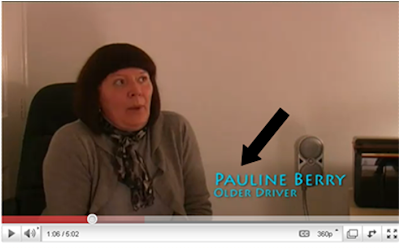



is examples of print adverts and I have compared them both to see any differences in professional work and ours. The title,date and the time it is on is in the bottem left hand corner as seen in both images. The channel 4 logo is in the centre right hand side of the print advert this is shown on both images again, therefore shows how we have conformed to the normal codes and conventions of real media products.
My Radio advert, has a music bed aswell as other real media documentaries, this is showing how that It is conforming with the rules of a radio advert.
Q2. How effective is the combination of your main product and ancillary texts?
Q3. What have you learned from your audience feedback?
Q4. How did you use media technologies in the construction and research, planning and evaluation stages?
In the planning of our documentary 'Emergency Stop' we decided to use alot of different technologies, for example Archive footage, cut aways and vox pops. This will make the documentary less boring and make it more enjoyable to watch. When we interviewed people ad filmed our vox pops we decided to ask people questions like 'what is your favourite colour?' As well as questions about driving which will then help us decide on the colour we will use for our titles.
After all the planning for our documentary had been done we then needed to get some research that was relevant to driving, the research also needed to be up to date and include statistics to make our documentary more realistic.
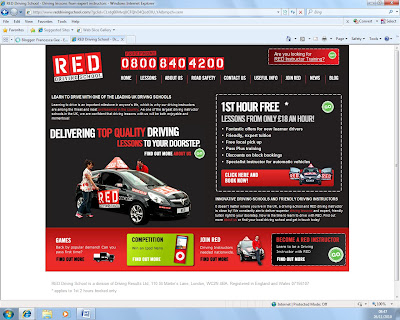

We then started to edit our documentary and by doing this we had to look out for information and archive footage on the news that would help us keep our documentary modern and original. The footage had to be interesting so that our target audience would actually want to watch it and not get bored. For our archive footage we decided to use Top Gear because this programme is modern and up to date therefore people can relate to our documentary, also as this is already a TV programme so we know that people enjoy watching it. Here is a link where we got our archive footage from www.bbc.co.uk/iplayer
We also decided to use footage from the film Final Destination 3 within our documentary because this film is a modern film therefore the audience will be interested. We stuck with the idea of using modern up to date footage because the programmes and footage will still be fresh in our audience's minds. Whilst editing our documentary Emergency Stop, we worked on a range of different things like aligning different interviews so that the framing would look more professional.

Also we worked on putting a background onto a Bluescreen we used for an interview as shown below. When we where using Premier Pro we were able to watch two different clips this ment we could cut down and work on two different clips at the same time, therefore we could see if we could use a different clip as cut aways or footage that could be placed over our voiceover.
When we where using Premier Pro we were able to watch two different clips this ment we could cut down and work on two different clips at the same time, therefore we could see if we could use a different clip as cut aways or footage that could be placed over our voiceover.

We also used a cutting tool which we could use to cut out anything we didn't want to put into our documentary. Once had edited our documentary we started to work on our print advert doing this we opened Photoshop and decided on using a ripped red learner plate as our main focus image because this relates to learner drivers and to our target audience however will also reach a bigger audience than just learner drivers. After we had chose our image for the main focus of our poster we then added a coloured background to it just to see what it would look like.
Once had edited our documentary we started to work on our print advert doing this we opened Photoshop and decided on using a ripped red learner plate as our main focus image because this relates to learner drivers and to our target audience however will also reach a bigger audience than just learner drivers. After we had chose our image for the main focus of our poster we then added a coloured background to it just to see what it would look like.
 The next thing we did was to add the Channel 4 logo onto our poster this shows what channel our documentary would be on for the viewers. Originally we wanted to use the colour blue on our poster because this was the favourite colour our target audience chose however we then changed our minds to red because this stands out alot more and pulls the viewers in, also people relate the word 'STOP' to the colour red hence the name of our documentary 'Emergency Stop'.
The next thing we did was to add the Channel 4 logo onto our poster this shows what channel our documentary would be on for the viewers. Originally we wanted to use the colour blue on our poster because this was the favourite colour our target audience chose however we then changed our minds to red because this stands out alot more and pulls the viewers in, also people relate the word 'STOP' to the colour red hence the name of our documentary 'Emergency Stop'.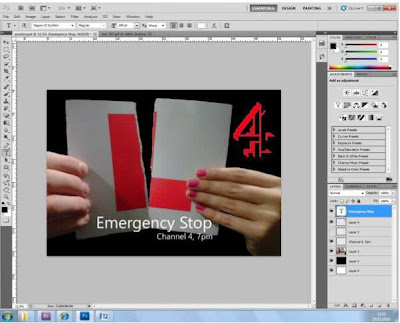


In our documentary there are things I liked and things I disliked for example some of the things I liked where the background music we chose, I think it fitted very well with the whole idea of our documentary. However I think the music could have faded in with the clips a little bit better as it just cuts off instead of the voume just being lowerd so that you can still hear the peoplebeing interviewed over the background music. So that is one thing I would change if I where to do this project again.
I like how one of the interviewees plays her Beyonce ringtone and both start to dance to it because this shows the funny side to ur documentary that we where trying to get across to the audience. Also the cut aways we used I think works well because they where not too long and the pans we used looked professional and works well with the music.Instead of jump cuts we used cross dissolves on the start and beggining of each clip to make it more 'mtvish'.
On the other hand I think that we could have had a better ending to our documentary as it just cuts to black and the music just cuts out, I think If we where to do this again I would have the music fading out and also mayby the last clip fades out also. I woud use the mics we where given access to because this would have given us better sound quality.




The themes used is this documentary are the Media and how marketing within the film industry will effect sales, also how merchandising can help boost the morale of the film. The target audience is discussed because they want to address specific audiences.
Narrative Structure
At the beginning the documentary poses a question like 'Why is marketing important?' which sets it nicely. The middle creates conflict if the film did not hit the target audience they wanted and how the Mouse Hunt had overcome the bad reviews and in the end became successful and all the marketing payed off as people wanted to go out and watch it.
Camerawork
Close ups used of the interviewee's are used this connotes importance. Panning shots where used of the merchandising of products to help promote the film, also close ups of money exchanging hands for the products being sold like Tetlys Tea Bags. A high angle shot is used of London to portray how they merchandise in the Capital and not in small towns this will increase funding. On the other hand static/stationary shots are used which can be quite boring and serious. The interviewee was positioned to the side of the camera in some interviews.
Mise en Scene
Alot of the Mise en Scene is placed at box offices or cinemas, could have been set anywhere but they chose these places because they relevent to the documentarys theme and subject matter. Everyone in the documentary is British and no Americans speaking this is relevent aslo as they set it in the film making Capital in the UK, London. Also this where Mousehunt will be released.
Sound
Natural sound of the interview with a music bed makes sure that it is kept bubbly and not too serious. Various music was played throughout and the sound continued over a new set of visuals.
Editing
Fades where used however this portrays the documentary to be quite ameture because you could used a cut away instead to make it look more professional.Lots of cuts where used between the action in the Interviews, and used dissolves between interviews and cutaways this creates a flowing effect to the interviews. Dissolves where also used between interviews to the next shot.
Archive Material
The archive material in this documentary where film trailors which where used to support how marketing is successful or not and footage from premiers to show how people are 'into' the film.
Graphics
Most of the graphics are self explanatry, simple and some colourful graphics tokeep the viewers intrested.

At the beginning the documentary introduces the game there is no real point to it, however in the middle presents a problem from Lara Croft having small breasts and a small bum to then having big breasts and a big bum this is not ethnical this goes more towards the stereotypes. Aslo the producers where scared incase Angelina Jolie dictates to what Lara Croft can and can't do. In the end the resolution is that the video game was infact successful and Lara Croft was celebrated as a character by men and women.
Camerawork
Over the shoulder shots of different audiences playing the game, men and women of different ages. Big close ups of people being interviewed this connotes that these people are the focus that they are important. Canted camera of the main focus of this documentary which is Lara Croft and the man that created the game, this aslo shows there relationship (also canted angles from the game).Pans where used to look at the keyboard action going on as the players are playing on Lara Croft.
Mise en Scene
The Mise en scene was relevant as the Interviewee's where interviewed on a dark background, it gave the impression that they where apart of the computer game, in contrast with other people such as Angelina Jolie who was in a lit up background to show she is the main focus.Natural sounds are used from the interviews, sound from the computer game where also used this leads the audience/viewers in a certain way as grunting noises from Lara Croft are heard this connotes her being 'sexual'. Madonnas techo music could also be heard to show the variety of age groups that could be watching. Music beds are important to use in documentarys.
Editing
Some of the editing was fast motion at times to suggest an urgency for this product. Cutaways where used during the interviews, which where fast pace and fast cuts where used when people where playing the game to fasten up the speed.
Archive Material
The archive footage in this documentary is mostly from the Tomb Raider game, this let us see why the game is so popular.
Graphics
The graphics are once again quite simple and self explanatry, 'That Thing' is used as a gimmik with all their documentarys.

Inside 9/11 Zero Hour
Type of documentary:
This documentary is mixed because it has a combination of voice over, observations, reconstructions and interviews these documentaries push the narrative form. The observations and visuals act as evidence to your facts.
Themes:
The Themes discussed in this documentary are Religion, Suicide, Murder, Terrorism and the Terrorist attacks on the world trade centre in 2001, also discusses the conspiracy theories involved around this attack.
Narrative Structure:
In the beginning the documentary reconstructs the attack on the twin tower, the middle creates conflict and explains why it happened and makes the audience ask whether it was a terrorist attack or if that was just a conspiracy. However at the end of the documentary it shows how it was resolves and the viewers have a clear picture into why this dreadful terrorist attack had taken place in 2001.Camerawork:
A range of camera angles are used that are relevant to the topic discussed, for example big close ups are used of the four men that led the attack and zooms are used to show their eyes, almost like they have hatred in them and no emotion. Handheld camera is used in the reconstruction of the movements of the four men, this makes the audience feel as though they are actually there experiencing it. This evokes emotion from the viewers. Close ups of interviewee’s shows importance and helps support the idea that they are experts on the topic discussed. A high angle shot is used of an elevator with the number 63 on it, this connotes the 63rd floor and how the attack was so close if not higher to this floor.
Mise en Scene:
In the interviews the backgrounds are pitch black with the interviewee in a bit of light, this creates a shadow on one side of the interviewees face. This symbolizes the darkness and sadness into what has happened to the world trade centers. Also the interviewees wear black clothing and suits this shows them paying tribute to that awful day and the suits represent intelligence.
Sound:
The voiceover is quite a deep and serious, also the documentary uses a male American voice. Phone calls from the American 11 flight to the Air Defense Sector Headquarters are heard over visuals on screen this help the viewers put the story together better. Non Diegetic sound is used like Sirens and people screaming this dramatizes the situation. Music embedded under the narrative are used to evoke feelings from the viewers. On the other hand natural sound is used in the interviews to create a sense of realism.
Editing:
Cut aways are used of inside a plane and planes flying to try and give visuals under the narrative to what happened, also shots of the Twin Towers before the terrorist attacks this shows the viewers the extent to the damage that had been done. Aerial shots of Portland Maine USA sets the scene for the viewers. A close up shot of Muhammad Atah is flowing like in the wind this could connote a flag of the country blowing in the wind. Fades are used from one image to another, Pans around the Air Defense Sector Headquarters are used to show how these are very important. A lot of cut away shots of Osama Bin Laden are used this connotes how he could be involved and to blame for the terrorist attacks on The World Trade Centre.
Archive Material:
There is a lot of archive material in this documentary because it help support their view on what had happened, used as evidence to the narrative. Security footage is used of the four men said to be leading the attack on the Twin Towers checking in the airport. Archive footage of the actual attack shown and videoed by the general public this dramatizes and shocks viewers. Also news coverage’s are used to show the world wide shock to what had happened, for example CNN live. Shots of President Bush at the time as he gets the news of the attack and a zoom is used to show his facial expression.
Graphics:
In the interviews there are simple graphics, which are a black background and white font saying the interviewee’s name and who they are. As the reconstruction is played the time it had taken place faded in and out at the bottom left, helps the viewers put the story together through visuals and narrative. Finally computerized images of the towers support the narrative and it explains the different floors and levels in the towers.

The Michael Jackson Story
Type of documentary:
This documentary is mixed because it has a mixture of visuals, archive footage, interviews and voiceovers.
Themes:
The themes that are used in this documentary are Fame, Fortune, The struggle between your personal life and fame, the music industry and family.
Narrative Structure:
The narrative structure in this documentary is in the beginning it introduces Michael Jackson and The Jackson Five. The middle in controversial as Michael Jackson launches his solo career at just 17, ‘when Michaels popularity went into orbit’. However his personal life was getting in the way, the rumors about his molestation case, and when he was arrested his still acted as if nothing could hurt him. In the end of the documentary Michael Jackson was found not guilty and he announced his comeback concert which was also his last concert in London, and he said goodbye.
Camerawork:
In the interviews shallow focus was used to show how the interviewee was the main focus of the shot and they are important. Pans where used on the newspaper articles to let the viewers see more clearly what was going on in the tabloids. Shot reverse shot is used on Michael Jackson and his fans at his concert, low angles are used for his fans to show they look up to him and are venerable, they long for him however high angles are used on Michael Jackson to show he is the higher power he is their ‘hero’. The interviewee’s sit at either the left side of the camera or the right instead of the middle this creates variety, also close ups of the interviewee’s to symbolize importance.
Mise en Scene:
The Mise en Scene in this documentary is always relevant to the topic in question, for example a background in the interview has music awards, cds and records to connote his achievements in the music industry. A lot of things are colorful and upbeat like back in the 70’s – 80’s when Michael Jackson was a child, the interviewee’s are wearing quite colorful clothing this connotes that they are celebrating his life and not mourning his loss.
Sound:
Natural sound is used in the interviews to create realism, Michael Jackson’s songs where played behind the narrative which acts as a music bed. Voice over is used with a male voice however not as serious as other documentaries. A quote from Michael Jackson was played ‘I feel as if I have a suit of armor on, nothing can hurt me’, this shows the determination that he has to not letting the controversial rumors get to him and let his fans down.
Editing:
Cut aways are used from Michael Jackson concerts, his fans screaming and longing for Michael, parts of his music videos, and cut aways of him singing as a child, teenager and an adult. Zooms are used with the cut aways of the newspapers so that the viewers can read the articles properly, also a zoom is used on Michael Jacksons face to show his facial expressions and emotion. Fades are used from one image to another however this can be said to be amateur. Throughout the documentary Archive footage of Michael Jackson performing as he grows up from a child to an adult.
Archive Material:
There is a lot of relevant Archive material such as footage from his concerts, form his music videos and old footage from when he was a child, showing his talent and love for music even when he was a child. The Jackson Five performing is shown this help compare Michael from then to now and how far and successful he has become. However footage of Michael Jackson being arrested for molestation claims, this automatically makes the audience judge Michael in a bad way even though he was found not guilty.
Graphics:
The graphics are simple and self explanatory, in the interviews the name of the interviewee in a simple white font and what their relationship to Michael Jackson is, this helps the audience get a picture of his life.

 This represents our target audience for our documentary, we decided to focus more on this age, because there young and learning to drive, and they start to gain more independence. This chart shows that the age for people to start learning to drive is 17 which is the same age as now, therfore nothing needs to change.
This represents our target audience for our documentary, we decided to focus more on this age, because there young and learning to drive, and they start to gain more independence. This chart shows that the age for people to start learning to drive is 17 which is the same age as now, therfore nothing needs to change. Throughout trying to find our target audience, we can to this conclusion that more females are learning to drive than males, this may be for many reasons.
Throughout trying to find our target audience, we can to this conclusion that more females are learning to drive than males, this may be for many reasons. As you can see, there were a numerous of different channels that people enjoyed watching, however Channel 4 was the most popular. From finding this, we decided that broadcasting our documentary on this channel would be best in attracting our target audience.
As you can see, there were a numerous of different channels that people enjoyed watching, however Channel 4 was the most popular. From finding this, we decided that broadcasting our documentary on this channel would be best in attracting our target audience. Again, we decided to place our documentary in the 7pm slot because this time was most popular with our target audience, therefore more viewers.
Again, we decided to place our documentary in the 7pm slot because this time was most popular with our target audience, therefore more viewers. Blue is our target audiences favourite colour, we did this as it would help us with our colour scheme within our documentary, as we were able to find out what colours they like most. Getting the colours they like would effect our mise-en-scene massively within our documentary, so if we got colours people liked, they are more likely to tune in.
Blue is our target audiences favourite colour, we did this as it would help us with our colour scheme within our documentary, as we were able to find out what colours they like most. Getting the colours they like would effect our mise-en-scene massively within our documentary, so if we got colours people liked, they are more likely to tune in. We also asked our target audience why they wanted to drive, to give us a rough estimate why young people are so eager to learn to drive. This chart tells us that people want to drive because it is easier and a better way of travel.
We also asked our target audience why they wanted to drive, to give us a rough estimate why young people are so eager to learn to drive. This chart tells us that people want to drive because it is easier and a better way of travel. Along with asking why our target audience wanted to learn to drive, we also asked if it mattered if learning with a certain sex mattered. Through our finding we found out that the majority of people didn't care about the sex of their driving instructor.
Along with asking why our target audience wanted to learn to drive, we also asked if it mattered if learning with a certain sex mattered. Through our finding we found out that the majority of people didn't care about the sex of their driving instructor. Within our society, there is a lot of pressures to do a certain thing, and this is also incorporated into passing your driving test. Many of our target audience felt that there was a lot of pressure to buy a car once the they've passed there driving test. This may be for a number of reasons, and peer pressure may be one of the factors.
Within our society, there is a lot of pressures to do a certain thing, and this is also incorporated into passing your driving test. Many of our target audience felt that there was a lot of pressure to buy a car once the they've passed there driving test. This may be for a number of reasons, and peer pressure may be one of the factors. We also asked if there was any pressure in passing your driving test first time, and again the majority of the people we asked said there was a pressure in passing it first time, again this could be because of peer pressure. Or it could just be simple rivalry between friends about who buys the best car once past.
We also asked if there was any pressure in passing your driving test first time, and again the majority of the people we asked said there was a pressure in passing it first time, again this could be because of peer pressure. Or it could just be simple rivalry between friends about who buys the best car once past. The average amount of lessons our target audience thought would be appropriate before taking there test was 20, this might be because they wouldn't feel ready taking there test and only having a little amount of experience on the road and inside the car.
The average amount of lessons our target audience thought would be appropriate before taking there test was 20, this might be because they wouldn't feel ready taking there test and only having a little amount of experience on the road and inside the car.
 With this question, we asked people what form of transport each participant took, and we were able to see that most young people get a bus to get places they go, but also, that the majority of our target audience would say that being able to drive would be a lot easier and simple for them.
With this question, we asked people what form of transport each participant took, and we were able to see that most young people get a bus to get places they go, but also, that the majority of our target audience would say that being able to drive would be a lot easier and simple for them. Many of the people who filled out our questionnaire thought that the theory test was relatively easy, the most scoring a mere 7/10.
Many of the people who filled out our questionnaire thought that the theory test was relatively easy, the most scoring a mere 7/10. We also found out that the majority of people we asked who had taken their theory test had passed it first time.
We also found out that the majority of people we asked who had taken their theory test had passed it first time.
The majority of our respondents to our questionnaire said that they found driving pretty easy, however other learner drivers said they found driving easy only sometimes, this could be for a number of reasons for example the weather could be bad on the day that they where driving.

 Throughout our research we found out that again the majority of people asked said that they did feel nervous when sitting behind the wheel of a car for the very first time and they started to learn to drive at the age of 17.
Throughout our research we found out that again the majority of people asked said that they did feel nervous when sitting behind the wheel of a car for the very first time and they started to learn to drive at the age of 17.
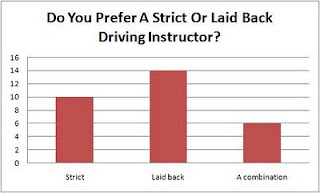 People also thought that having a laid back instructor could mean that they'd have more fun with driving, therefore a better experience but also, that they wouldn't feel so pressured when on the road, therefore they wouldn't feel as nervous.
People also thought that having a laid back instructor could mean that they'd have more fun with driving, therefore a better experience but also, that they wouldn't feel so pressured when on the road, therefore they wouldn't feel as nervous. The majority of people asked thought that the age someone should be allowed to drive would be the age people are allowed to drive now, they may have found this age to be mature enough to drive and that they'd feel safe with using the road at this age.
The majority of people asked thought that the age someone should be allowed to drive would be the age people are allowed to drive now, they may have found this age to be mature enough to drive and that they'd feel safe with using the road at this age.The narrative structure for our documentary is pretty simple, the idea that we will have a clear exposition means that people will clearly understand what our documentary is about but also to gain a more in depth understanding about learning to driver and young drivers. At the beginning of our documentary will be clear set out interviews with a number of different people, including non-drivers, older drivers and other people set out within the driving industry. By the middle there will be a clear conflict within our documentary, this will happen due to what people in interviews say about our topic area, learning to drive. We will also show the number of fatalities due to young drivers and why they may actually do to cause such things. By this time, we will have gained both sides of the argument, the good and the bad things about young drivers. And by the time the documentary comes to a close, we, the audience will gain a clear understanding of what the documentary was about, and they'll be able to make up their own mind up about learner drivers, therefore the ending is pretty open-ended. This is a good thing, because it allows the audience to be more involved within our documentary. It would also allow people who are undecided about driving to make up their mind whether they wish to want to learn or if they wish to still be an non-driver.
The outline of content for our documentary are:
Our research requirements for our documentary are:
At the start of the documentary, the exposition will be set - learner drivers, isit hard to learn? A montage of clips will be displayed in order to set out how there are various types of drivers, old and young and more experienced than others. There will also be various interviews, vox pops and cut away shots to help establish what the documentary is actually about and highlighting learner driving in general. The middle of the documentary will contain more interviews, including an interview with a policeman, highlighting his views on whether young drivers are more vulnerable and also commenting about 'boy racers' and how they can cause various crashes and mis haps within the streets. There will also be interviews with people such as the principle of priestley college, parents and their cars, it'll give a clear understanding of cars parents had when they were younger. And we're able to understand what cars were like a few years ago compared to cars today.
The End of the documentary will answer any questions lying such as how easy is the theory test? or how much the driving test has changed over the years it has been running. People will also gain a clear understanding of what this documentary was about, and undecided drivers will then come to a decision if they wish to drive or not. This documentary may also give that understanding to young and immature learner drivers, to be more safe and more aware of their surroundings of the road and also people who aren't on the road. This may then begin to reduce the amount of fatalities due to immature drivers.